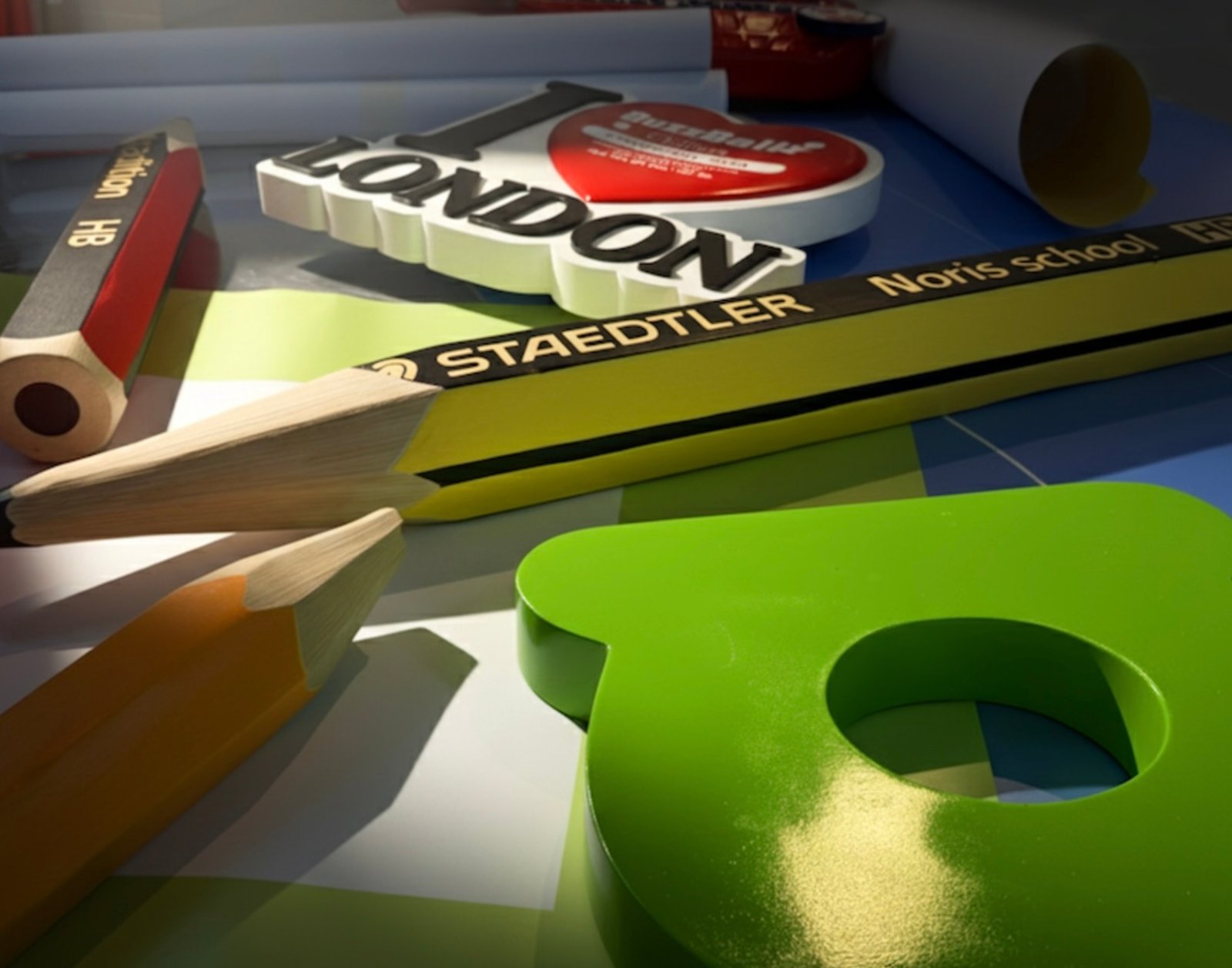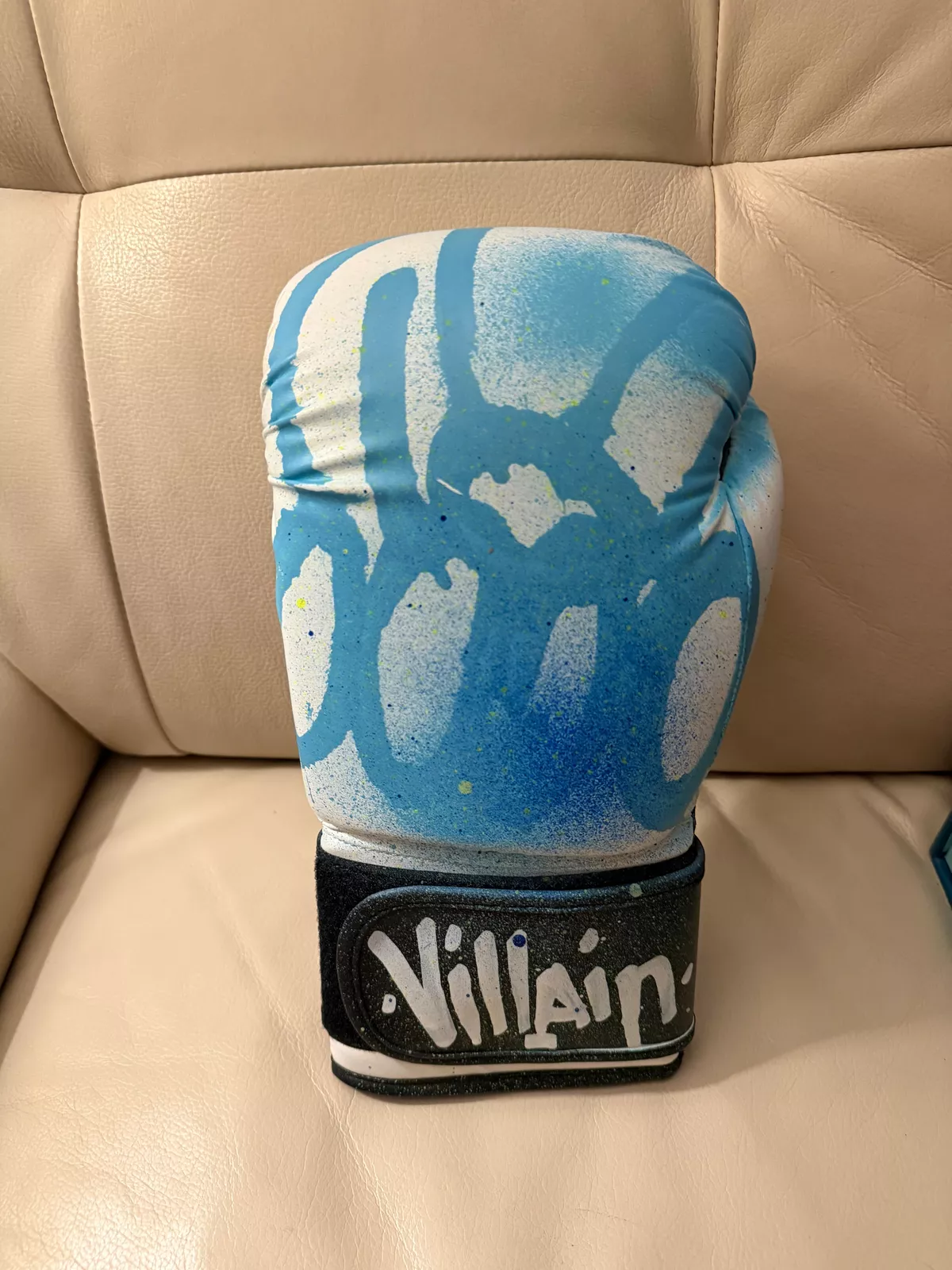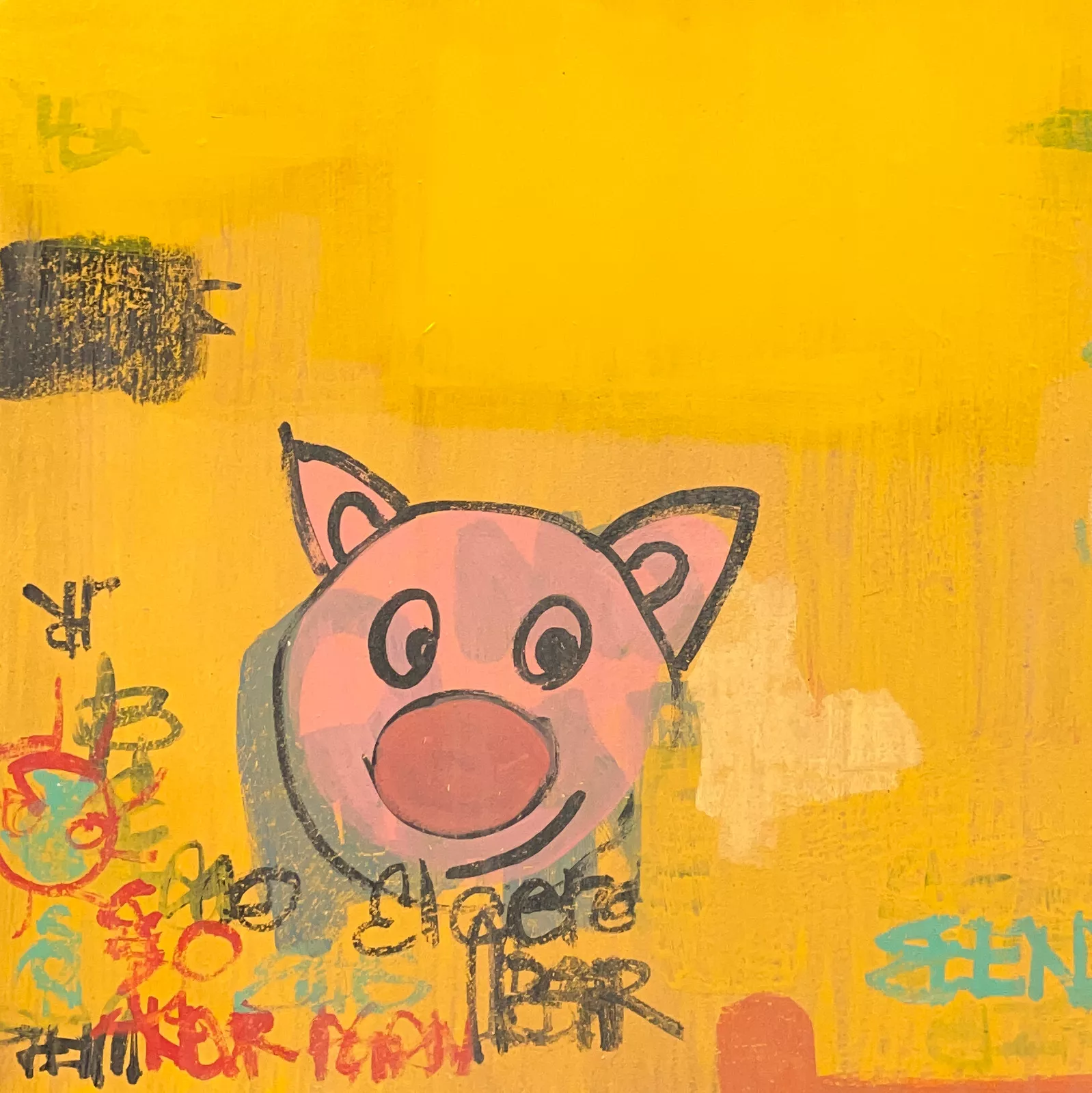Few images in hip-hop history are as instantly recognizable as the portrait of Christopher Wallace — better known as The Notorious B.I.G. or Biggie Smalls — wearing a tilted crown. Immortalized in a 1997 photoshoot by Barron Claiborne just days before Biggie’s untimely death, the “King of New York” visual has since transcended photography to become a universal symbol of hip-hop’s raw power, ambition, and tragic vulnerability.
In Biggie, 2024, Philadelphia-based mixed media artist Seek One revisits this legendary image, not as mere homage but as an active conversation with Biggie’s mythos and legacy. Through a complex layering of spray paint, collage, and hand-painted elements, Seek One breathes contemporary life into an icon whose influence still reverberates globally nearly three decades after his death.
The artist behind the vision: Seek One
Seek One is no stranger to merging past and present. Known for blending vintage photography, pop culture references, and expressive abstract techniques, he explores the tension between nostalgia and modernity in all his work. His name, “Seek One,” captures his lifelong quest for meaning and authenticity — a pursuit mirrored in the layered complexity of his canvases.
Raised in Philadelphia’s skate and street art subcultures, Seek One learned early on to view the city as a living canvas. Graffiti taught him the power of bold, raw expression; photography gave him narrative focus; fine art allowed him to experiment with materials and textures. His artistic language is born from these intersections, producing works that are as much about surface beauty as they are about cultural memory.
First impressions: Color, energy, emotion
At first glance, Biggie, 2024 is a visceral assault of color and energy. The familiar black-and-white photograph of Biggie’s face anchors the composition, his heavy-lidded gaze staring out at the viewer with an intensity that feels almost confrontational. Yet the monochrome center is surrounded — even interrupted — by vibrant splashes of blue, red, yellow, and white.
These drips and splatters recall the spontaneous gestures of abstract expressionists like Jackson Pollock, suggesting both chaos and freedom. The paint appears to have been applied with urgency, as if to echo Biggie’s own meteoric rise and the dangerous intensity of his life in Brooklyn’s streets.
But these colors are more than mere decoration. In Seek One’s visual language, each hue carries emotional weight. Blue evokes melancholy and introspection; red signifies power, passion, and sometimes violence; white offers fleeting moments of purity and light amid the noise. The tension between these colors mirrors Biggie’s own contradictions — a poet and a hustler, a street storyteller and a global superstar.
Technique: The layered truth
Seek One is known for his multi-dimensional approach, often incorporating collage elements, hand-applied paint, and spray techniques. In Biggie, 2024, the layering goes beyond aesthetics. It acts as a metaphor for Biggie’s layered persona and the multi-faceted nature of celebrity in the modern age.
Underneath the paint, close inspection reveals fragments of text and abstract shapes — perhaps clipped magazine headlines or song lyrics. These fragments suggest the media narratives that have both elevated and distorted Biggie’s legacy over the years. By partially obscuring and revealing these layers, Seek One invites viewers to question how much of Biggie’s public image is constructed, how much is authentic, and what truths lie somewhere in between.
The visible drips and splatters also evoke the ephemeral nature of street art, suggesting that all legends, no matter how grand, are ultimately vulnerable to the forces of time and reinterpretation. Biggie’s image here is not encased in glass but actively evolving, open to new meanings with each viewer’s gaze.
Cultural symbolism: Biggie beyond Brooklyn
Christopher Wallace’s rise from the streets of Brooklyn to global superstardom remains one of the most compelling narratives in modern music history. His lyrics chronicled the grim realities of street life while simultaneously celebrating the dream of transcending it. In many ways, Biggie embodied the complexities of the American dream — a theme that resonates deeply with Seek One’s urban-inspired aesthetic.
Biggie, 2024 is not just a tribute to a musician but a commentary on cultural canonization itself. By placing Biggie in a new, vibrant, and chaotic context, Seek One asks us to reconsider how we immortalize icons. Is Biggie’s crown a celebration of his achievements, or does it represent the heavy burden of representation that he carried for an entire generation?
The painting’s energetic overlays suggest that Biggie’s story is not static; it is continually reinterpreted by new artists, fans, and cultural critics. In this way, Seek One positions himself not as a historian but as a participant in an ongoing dialogue — one that spans music, art, and social identity.
The urban aesthetic: From street to studio
Seek One’s background in street art is crucial to understanding his approach. Street art, by nature, is impermanent and public — subject to weather, censorship, and rival artists. By bringing street-inspired techniques into a fine art context, Seek One disrupts traditional notions of what belongs in galleries versus what belongs on city walls.
In Biggie, 2024, we see this tension play out visually. The drips and bold strokes evoke murals and graffiti tags, yet the underlying photographic portrait roots the work in the realm of classic portraiture. This interplay mirrors Biggie’s own ability to straddle the rawness of street life with the polish of mainstream success.
Viewer engagement: A mirror and a window
Standing before Biggie, 2024, viewers are confronted with Biggie’s unyielding gaze. The directness of his eyes serves as both a mirror and a window — forcing us to examine not only his story but also our relationship to celebrity, mythmaking, and mortality.
The chaotic background suggests the noise of the modern media landscape, where images and identities are constantly layered, distorted, and repurposed. Yet amidst this chaos, Biggie’s face remains stoic, almost serene. This juxtaposition compels us to ask: what remains of a person when they become an icon? What parts of the human story are lost when an individual is immortalized in headlines and murals?
Biggie in 2024: Why now?
Choosing to revisit Biggie in 2024 is significant. As conversations about cultural appropriation, authenticity, and the commodification of Black culture continue to evolve, Biggie, 2024 becomes more than an artwork — it becomes a statement. It challenges viewers to reckon with how hip-hop culture has been consumed, celebrated, and, at times, sanitized for mass audiences.
Seek One’s choice to revisit Biggie now underscores the enduring relevance of his music and his message. In a digital age defined by rapid cycles of fame and cancellation, Biggie’s story reminds us of a time when narrative control was hard-won, and authenticity meant life or death.
Collectibility and market relevance
In recent years, the art market has increasingly embraced artists who blur lines between street art, pop art, and fine art. Seek One stands at this intersection. His ability to channel nostalgia while pushing visual boundaries makes his pieces highly desirable among both traditional collectors and younger, culturally attuned buyers.
Biggie, 2024 sits at the crossroads of cultural history and contemporary relevance, making it not only a powerful visual statement but also a valuable asset in the global art market. As collectors search for works that capture the zeitgeist, paintings like this — which fuse pop iconography with deep socio-cultural commentary — are likely to remain in high demand.
A living legacy on canvas
Biggie, 2024 is more than a portrait; it is a living, breathing meditation on legacy, identity, and cultural memory. Through his energetic marks and layered techniques, Seek One transforms Biggie from a static icon into an evolving story — one that belongs to the past, present, and future simultaneously.
As viewers, we are invited not simply to look but to engage, to question, and to participate in the ongoing construction of cultural meaning. In doing so, Seek One honors Biggie’s legacy not as a finished chapter but as an open dialogue — a testament to the power of art to keep legends alive, not just in memory but in active, vibrant conversation.
No comments yet.








